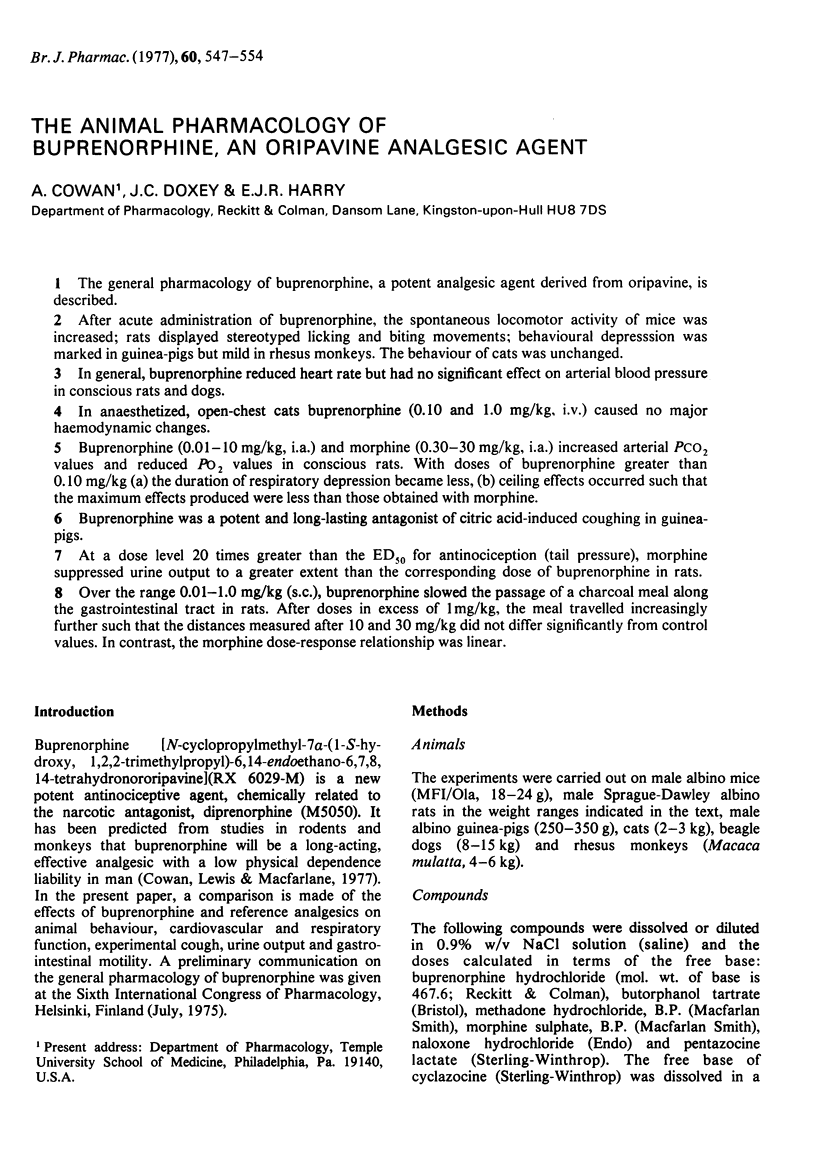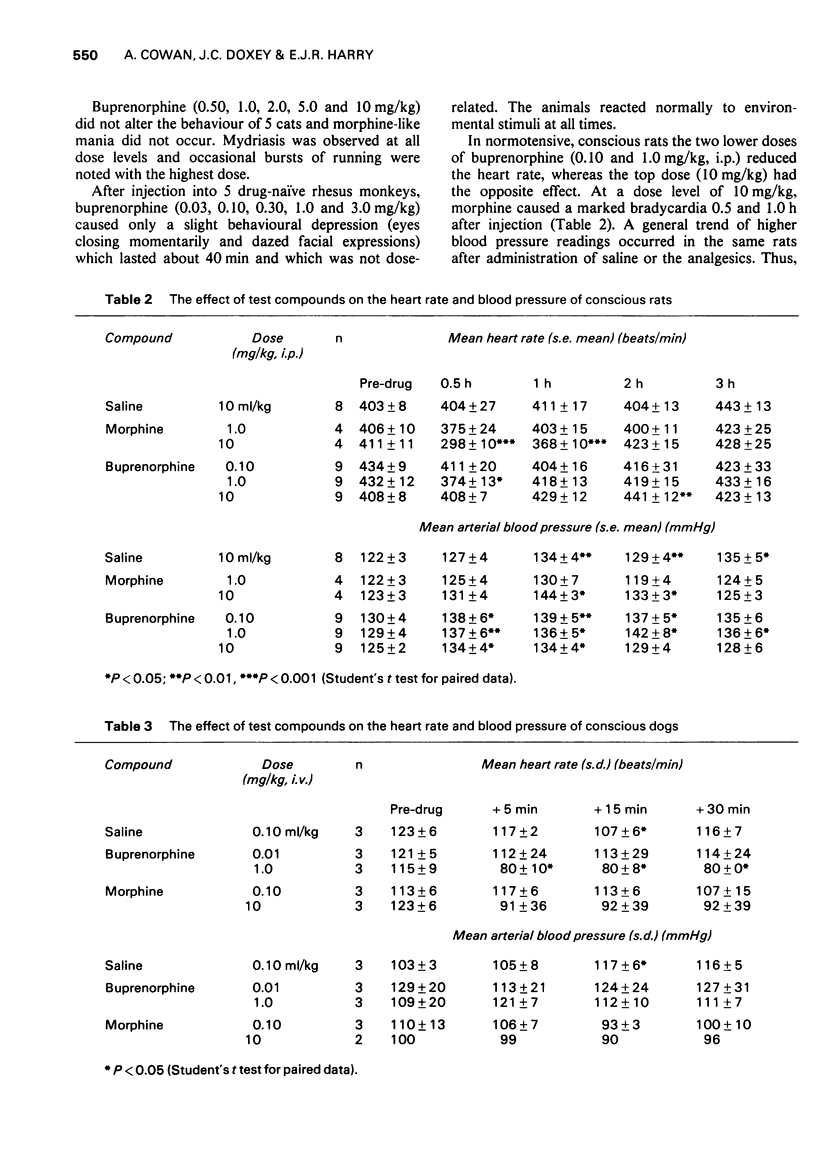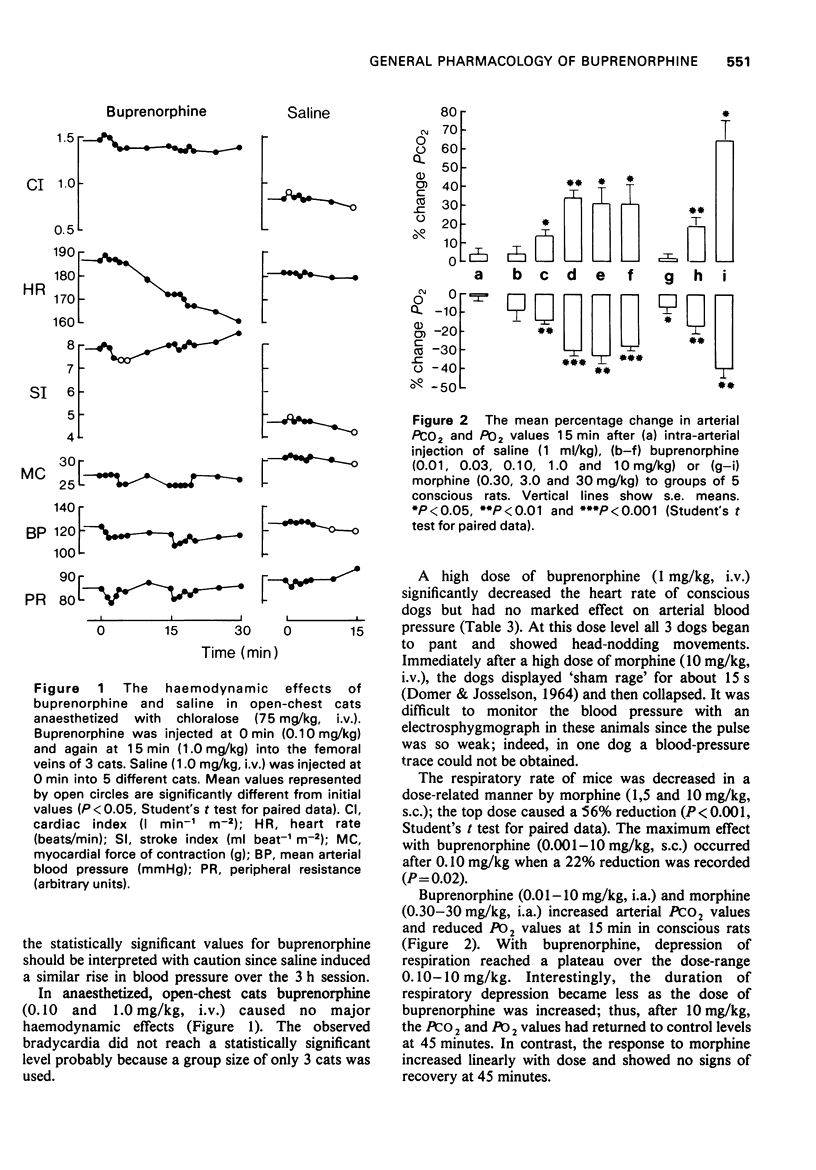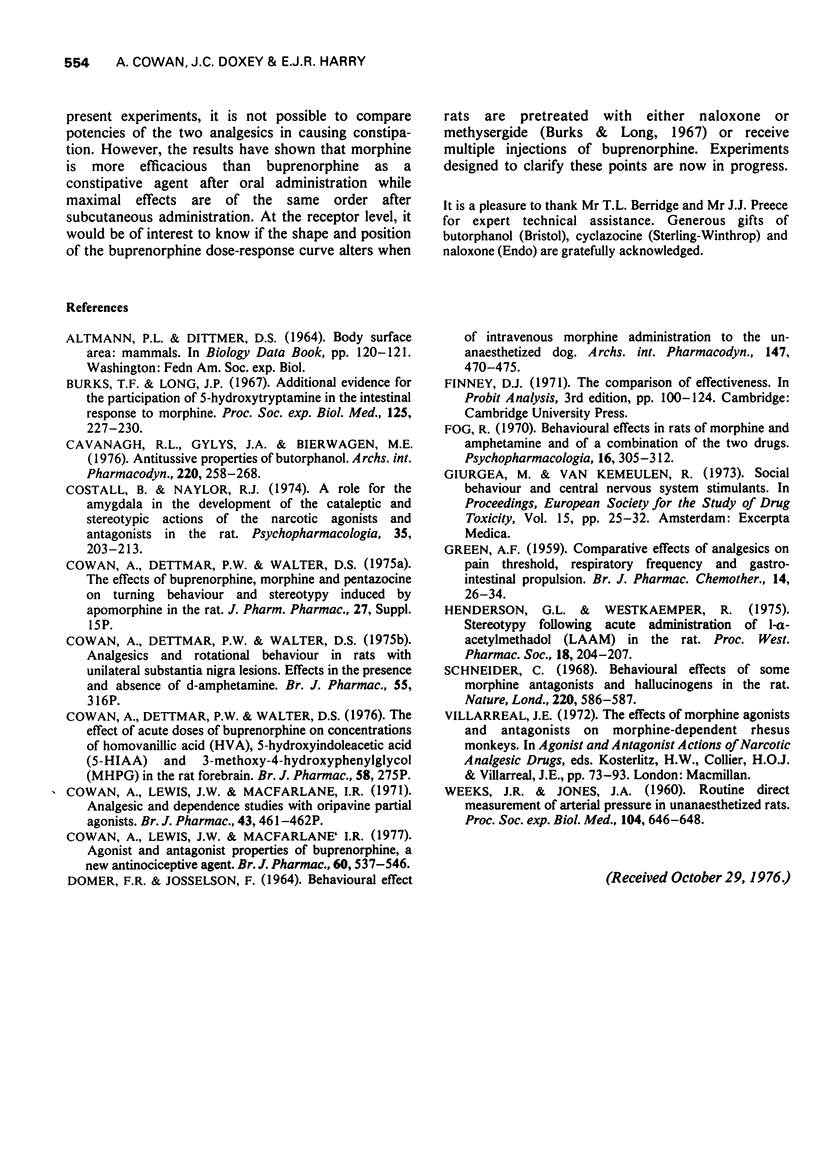Abstract
1. The general pharmacology of buprenorphine, a potent analgesic agent derived from oripavine, is described. 2. After cute administration of buprenorphine, the spontaneous locomotor activity of mice was increased; rats displayed stereotyped licking and biting movements; behavioural depression was marked in guinea-pigs but mild in rhesus monkeys. The behaviour of cats was unchanged. 3. In general, buprenorphine reduced heart rate but had no significant effect on arterial blood pressure in conscious rats and dogs. 4. In anaesthetized, open-chest cats buprenorphine (0.10 and 1.0 mg/kg, i.v.) caused no major haemodynamic changes. 5. Buprenorphine (0.01-10 mg/kg i.a.) and morphine (0.30-30 mg/kg, i.a.) increased arterial PCO2 values and reduced PO2 values in conscious rats. With doses of buprenorphine greater than 0.10 mg/kg (a) the duration of respiratory depression became less, (b) ceiling effects occurred such that the maximum effects produced were less than those obtained with morphine. 6. Buprenorphine was a potent and long-lasting antagonist of citric acid-induced coughing in guinea-pigs. 7. At a dose level 20 times greater than the ED50 for antinociception (tail pressure), morphine suppressed urine output to a greater extent than the corresponding dose of buprenorphine in rats. 8. Over the range 0.01-1.0 mg/kg (s.c.), buprenorphine slowed the passage of a charcoal meal along the gastrointestinal tract in rats. After doses in excess of 1 mg/kg, the meal travelled increasingly further such that the distances measured at 10 and 30 mg/kg did not differ significantly from control values. In contrast, the morphine dose-response relationship was linear.
Full text
PDF







Selected References
These references are in PubMed. This may not be the complete list of references from this article.
- Burks T. F., Long J. P. Additional evidence for the participation of 5-hydroxytryptamine in the intestinal response to morphine. Proc Soc Exp Biol Med. 1967 May;125(1):227–230. doi: 10.3181/00379727-125-32055. [DOI] [PubMed] [Google Scholar]
- Cavanagh R. L., Gylys J. A., Bierwagen M. E. Antitussive properties of butorphanol. Arch Int Pharmacodyn Ther. 1976 Apr;220(2):258–268. [PubMed] [Google Scholar]
- Costall B., Naylor R. J. A role for the amygdala in the development of the cataleptic and stereotypic actions of the narcotic agonists and antagonists in the rat. Psychopharmacologia. 1974 Feb 27;35(3):203–213. doi: 10.1007/BF00437749. [DOI] [PubMed] [Google Scholar]
- Cowan A., Dettmar P. W., Walter D. S. The effect of acute doses of buprenorphine on concentrations of homovanillic acid (HVA), 5-hydroxyindoleacetic acid (5-HIAA) and 3-methoxy-4-hydroxyphenylglycol (MHPG) in the rat forebrain [proceedings]. Br J Pharmacol. 1976 Oct;58(2):275P–275P. [PMC free article] [PubMed] [Google Scholar]
- Cowan A., Lewis J. W., Macfarlane I. R. Agonist and antagonist properties of buprenorphine, a new antinociceptive agent. Br J Pharmacol. 1977 Aug;60(4):537–545. doi: 10.1111/j.1476-5381.1977.tb07532.x. [DOI] [PMC free article] [PubMed] [Google Scholar]
- Cowan A., Lewis J. W., Macfarlane I. R., Whittle B. A. Analgesic and dependence studies with oripavine partial agonists. Br J Pharmacol. 1971 Oct;43(2):461P–462P. [PMC free article] [PubMed] [Google Scholar]
- Fog R. Behavioural effects in rats of morphine and amphetamine and of a combination of the two drugs. Psychopharmacologia. 1970;16(4):305–312. doi: 10.1007/BF00404736. [DOI] [PubMed] [Google Scholar]
- GREEN A. F. Comparative effects of analgesics on pain threshold, respiratory frequency and gastrointestinal propulsion. Br J Pharmacol Chemother. 1959 Mar;14(1):26–34. doi: 10.1111/j.1476-5381.1959.tb00924.x. [DOI] [PMC free article] [PubMed] [Google Scholar]
- Henderson G. L., Westkaemper R. Stereotypy following acute administration of l-alpha-acetylmethadol (LAAM) in the rat. Proc West Pharmacol Soc. 1975;18:204–207. [PubMed] [Google Scholar]
- Schneider C. Behavioural effects of some morphine antagonists and hallucinogens in the rat. Nature. 1968 Nov 9;220(5167):586–587. doi: 10.1038/220586a0. [DOI] [PubMed] [Google Scholar]
- WEEKS J. R., JONES J. A. Routine direct measurement of arterial pressure in unanesthetized rats. Proc Soc Exp Biol Med. 1960 Aug-Sep;104:646–648. doi: 10.3181/00379727-104-25937. [DOI] [PubMed] [Google Scholar]


